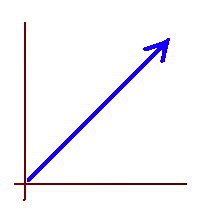It is really neat when students make their own discoveries.
This morning I had a Calculus 2 tutoring session about Integration by Parts.
My student was having some trouble with those integrals that are calculated by applying the integration-by-parts formula multiple times.
In this type of problem you get somewhat complicated expressions with parenthesis nested inside parenthesis, often with multiplying coefficients and/or negative signs in front of each parenthesis.
Students usually get confused when doing these integrals for the first time. The main reason is because they do not expect so much complexity. They believe the problems are going to be shorter than they actually turn out. So one key for getting these integrals right is to keep track of every step separately, identifying each new integral, and labeling it with a new variable of its own (using I, I1, I2, I3, ... works well). Then you keep working all the way down until you finally reach an integral you can actually solve, without any new “left-over” integrals. Then you re-trace your steps back one at a time, substituting each (ever longer) expression into the corresponding place for the previous partially solved integral, until you get to the original one.
We were working with the function (x^3)(e^x), where you start by deriving x^3, and integrating e^x.
My student understood everything but he wanted to make sure he would remember it later, so he started all over again. I suggested this time to start from the bottom up, so he integrated x(e^x), then (x^2)(e^x), and then (x^3)(e^x). I suggested for him to keep going so he integrated (x^4)(e^x).
At this point I said he could even memorize all the resulting formulas just for the test but it did not seem a good idea to him. Then I asked: “Well, maybe there is a pattern here. Do you see after factoring out e^x the last number (the constant term in the polynomial factor) is a factorial? And the polynomial always starts with the power of x we have in the original integral, does it not?”
I started looking for a way to factor out the polynomials. It turned out to be not always possible (the second-degree one already had complex roots) but all of a sudden my student exclaimed: “They are all derivatives!” So the pattern was not apparently multiplicative, but one more closely related to calculus, because it involves successive derivatives.
The best part here is my student saw it himself without my help. He realized what the pattern was before me.
That really made my day. I enjoy watching students making their own discoveries. This was not a textbook exercise, but a question I came up with after we went beyond the examples in the book, and my student was able to come up with the answer faster than me, showing he really understood the question. And now he has a very effective reference point to remember all those integrals if they show up in his exam! He won’t forget it because he discovered it on his own.
Combinatorial Morning in Tel Aviv, Sunday 28/12/2025
-
Coming very soon! Organizer: Michael Krivelevich Place: Schreiber
309, Tel Aviv University Event’s site.
https://sites.google.com/view/combinatorics...
56 minutes ago





No comments:
Post a Comment